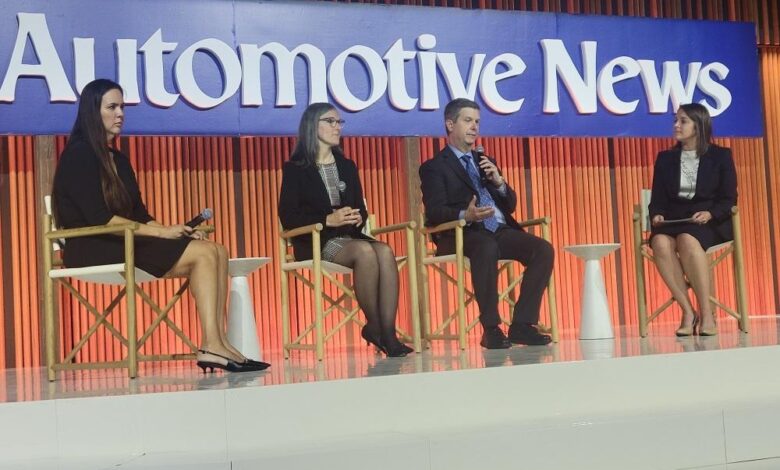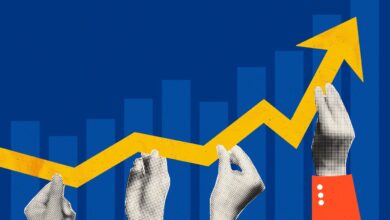Tariffs, End Of EV Tax Credits Put Autos On Roller Coaster Experts Say

📝 usncan Note: Tariffs, End Of EV Tax Credits Put Autos On Roller Coaster Experts Say
Disclaimer: This content has been prepared based on currently trending topics to increase your awareness.
Expert panel on auto sales trends, tariffs and the end of electric vehicle tax incentives during the Automotive News World Congress in Detroit on September 11, 2025. From left: Jessic Caldwell, Edmunds.com, Emily Kolinski Morris, Ford Motor Co., Jonathan Smoke, Cox Automotive, moderator Lindsay VanHulle, Automotive News
Ed Garsten
Somehow the auto industry and consumers are figuring out how to deal with the double jeopardy of import tariffs and the impending end of federal tax credits for many electric vehicles, and it’s not at all how insiders thought it would all go down.
When President Donald Trump announced he planned to impose stiff tariffs on imported vehicles among other products, consumers made a mad dash to dealer lots to beat expected price hikes on post-tariff vehicles.
The expectations were dealers would be left with fewer vehicles on their lots and prices would skyrocket on cars and trucks made outside the United States and sales would tank.
It all seemed logical, but sometimes logic doesn’t mirror reality.
Indeed, what happened over the summer is more like an amusement park ride to Cox Automotive chief economist Jonathan Smoke.
“So you’re seeing inventory deliveries slow down, but yet sales are stronger. So we are seeing supply tighten, a bit like it was back in 2021 or 2022, but it’s created what I’ll call this summer, particularly, a love roller coaster,” observed Smoke during a panel on sales trends at the Automotive News World Congress in Detroit on Thursday.
It all adds up to proof there’s still plenty of pent up demand for new vehicles, Smoke said.
That expected tariff-triggered price spike? It was more like a thumb tack.
CarGurus graph showing small difference in vehicle price increase between July and August 2025.
CarGurus Intelligence Report
Average new vehicle prices rose only about a hundred bucks between July and August from $49,400 to $49,500, according the Car Gurus August 2025 Intelligence Report released Thursday.
Kevin Roberts, Director of Industry Insights and Analytics at auto marketing website CarGurus.com
CarGurus
“Even with rising import costs and economic uncertainty, the market is showing surprising strength. Prices for both new and used vehicles held steady in August, while demand hit multi-year highs. For buyers, that means strong competition for value models—especially affordable EVs, which surged ahead of upcoming tax credit changes,” wrote report author Kevin Roberts, director of economic and market Intelligence at CarGurus.
There’s also the fear of missing out factor, even if not missing out on a new car or truck means missing out on the make or model first on a consumer’s list.
“There’s still this disconnect, sort of between how consumers are feeling and what they’re doing,” observed Ford Motor Company chief economist Emily Kolinski Morris during Thursday’s panel. “So they may be rushing out to get what they think are the last of the deals. They don’t seem to be particularly happy about it.”
So who’s picking up the tab on the added tariff expense? It’s not that easy.
In keeping with Smoke’s “love roller coaster” there are ups and downs. Average list prices of new vehicles actually fell about $500 from $50,000 to $49,500 between April 2 and August 31, according to the CarGurus report.
CarGurus graph showing uneven price increases among automakers after import tariffs were imposed.
CarGurus Intelligence Report
While some automakers did lower their prices, some, including the Detroit Three companies, Mitsubishi, Subaru, Hyundai, Volvo and Jaguar Land Rover boosted theirs as 2026 models reach showrooms.
But don’t be fooled. That doesn’t mean the cost of other vehicle brands declined as automakers found ways to make up the difference, according to Jessica Caldwell, AVP insights, at auto research site Edmunds.com.
“We have seen is an increase in destination prices in 2025 model year, the average destination was over $1,500. That’s another like way I think that you could see some cost increases, and then also changes in vehicle contenting and trim levels,” Caldwell said during the panel discussion.
Indeed, while the combination of pent up demand and ample inventories propped up sales over the summer, Smoke warns consumers are likely to soon see prices affected by tariffs as 2026 models arrive.
“About a quarter of what dealers have on their lots being model year ‘26 so we are seeing more of an acceleration in the increase in MSRP and invoice and average transaction price, but it’s still well within what is normal for inflation,” Smoke said.
Federal tax credits for many electric vehicles expire September 30, 2025. (Photo by Jeff Gritchen/MediaNews Group/Orange County Register via Getty Images)
MediaNews Group via Getty Images
If the import tariffs are Thing One, the demise after September 30 of federal EV tax credits qualifies as Thing Two.
The rush to beat the deadline is continuing through September, with Smoke predicting record EV sales for the third quarter, boosted by both urgency from consumers and record incentives from some automakers.
But come October, the party is likely to be over.
“We’re going to hit a speed bump when those credits go away,” predicted Smoke. “No question we have seen clearly in the data that the first quarter almost always sucks for EV sales. So I would expect this to have a little bit of a hangover that’s going to last us at least through the first quarter of next year.”
Given automakers already laid on generous incentives, Morris notes there’s not much more they can offer to mitigate loss of the tax credits. It will be interesting, however, to see how the various EV brands perform on a more level playing field when there’s no dividing line between those that qualified for tax credits and those that didn’t.
All three panelists agreed EV adoption is simply a slower process than the industry had hoped it would be, but that more consumers who desire some sort of electrified vehicle prefer hybrids.
“For a lot of people, a hybrid is fine, like, that’s enough of a change,” said Caldwell. “Because I think for an EV, there is that fatigue of trying to learn something else, and especially like in the post-Covid world, where everyone is really stressed out, and we see this in customer surveys, is they don’t necessarily want to buy an EV because they just don’t want to. They don’t want to deal with the hassle. They’ve got to figure out the charging situation and all of that, and you just don’t want to deal with it.”
One thing is for sure, asserts Smoke, is that the number of internal combustion engine, or ICE, vehicles is beyond the point of growth, declaring that in terms of sales and those on the road, “we’re past peak ICE.”
Indeed, both consumers and the auto industry need to come to grips with a stark reality, said Smoke.
“It’s going to be a multiple powertrain world, and we have to deal with the complexity of that.”




